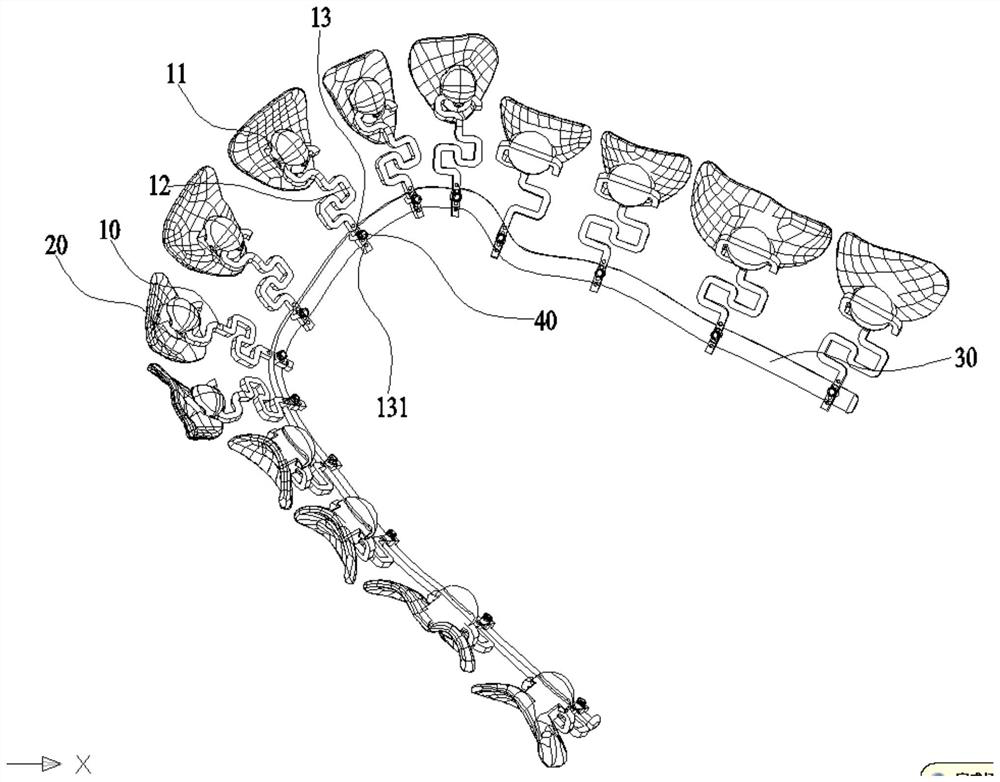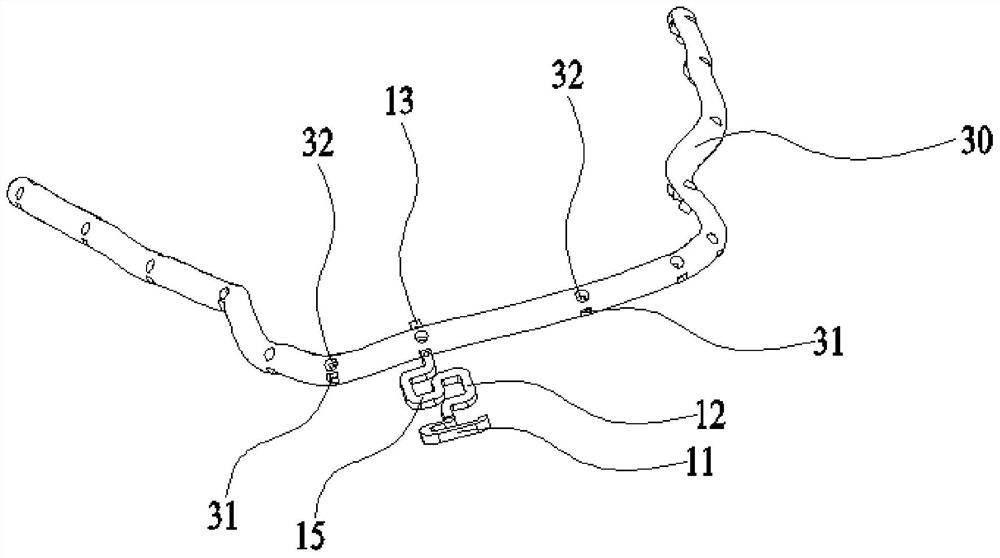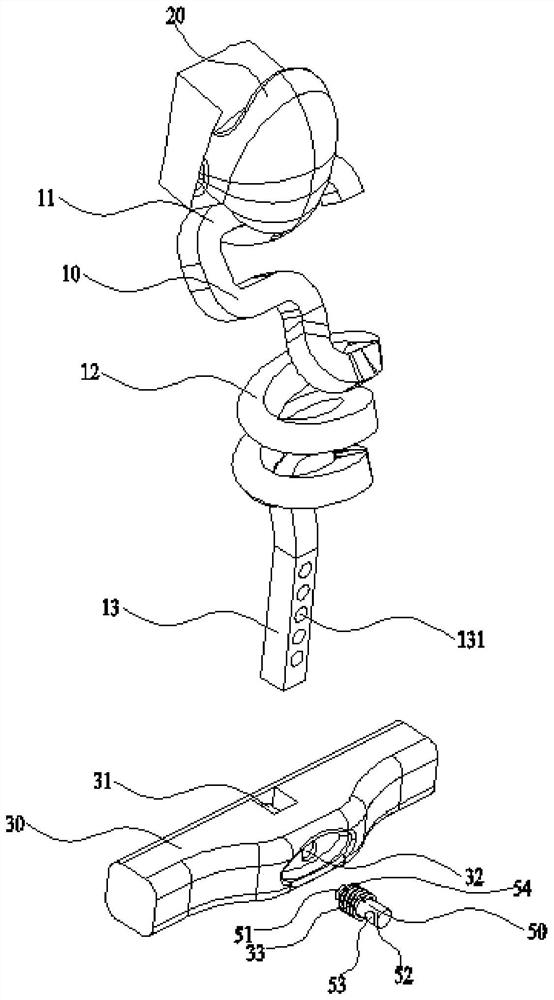Easy-to-adjust orthodontic device
A technology for connecting ends and fixing components, applied in the field of orthodontic devices, can solve the problems of increasing the time for doctors to diagnose and treat, increasing the production cost of elastic parts, and high production costs, so as to improve the efficiency of consultation, save production costs, and reduce operations. effect of duration
- Summary
- Abstract
- Description
- Claims
- Application Information
AI Technical Summary
Problems solved by technology
Method used
Image
Examples
Embodiment 1
[0059] refer to Figure 1-2 , figure 1 It is a three-dimensional structure diagram of the orthodontic device of embodiment 1, figure 2 It is a three-dimensional structure diagram of the arched member in Embodiment 1. This embodiment provides an orthodontic device, including: an arched member 30; a fixing member 20, which is used to be bonded to the patient's teeth; an elastic member 10 , the elastic member 10 includes a first connecting end 11, an intermediate section 12 and a second connecting end 13 connected in sequence, the intermediate section 12 is curved, and the first connecting end 11 is detachably connected to the fixing member 20 , the second connecting end 13 is detachably connected to the bow member 30 , and the bow member 30 is used to support the elastic member 10 . At least one of the first connection end 11 and the second connection end 13 is provided with at least two connection gears. In this embodiment, the second connection end 13 is provided with a plu...
Embodiment 2
[0063] refer to Figure 3-6 , image 3 It is the exploded structural diagram of the orthotic device of embodiment 2, Figure 4 It is the left side view of the orthodontic device of embodiment 2, Figure 5 yes Figure 4 Middle A-A sectional view, Figure 6 yes Figure 4In the B-B sectional view, this embodiment provides an orthodontic device, including: an arcuate member 30; a fixing member 20, which is used to be bonded to the patient’s teeth; an elastic member 10, the elastic member 10 includes a first connecting end 11, an intermediate section 12 and a second connecting end 13 connected in sequence, the intermediate section 12 is helical, the first connecting end 11 is detachably connected to the fixing member 20, and the second connecting end 12 is detachably connected. The connecting end 13 is detachably connected to the arcuate member 30 . The second connecting end 13 is provided with a plurality of connecting positions 131 , and each connecting position 131 is arra...
Embodiment 3
[0065] refer to Figure 7-10 , Figure 7 It is the front view of the orthodontic device of embodiment 3, Figure 8 is the front view of the elastic part of embodiment 3, Figure 9 is the front view of the bow member of embodiment 3, Figure 10 It is a rear view of the bow-shaped member of embodiment 3. This embodiment provides an orthotic device that is substantially the same as that of embodiment 1, except that the bow-shaped member 30 includes a female connecting portion 34 and a male connecting portion that can engage with each other. The connecting portion 35, the female connecting portion 34 is provided with a groove 341 for accommodating the first connecting end 11 or the second connecting end 13, in this embodiment, the groove 341 is used for accommodating the Referring to the second connecting end 13, the connecting gear position 131 is a fixing hole, and the female connecting part 34 or the male connecting part 35 is provided with a fixing bolt 351. In this embodim...
PUM
 Login to View More
Login to View More Abstract
Description
Claims
Application Information
 Login to View More
Login to View More - R&D
- Intellectual Property
- Life Sciences
- Materials
- Tech Scout
- Unparalleled Data Quality
- Higher Quality Content
- 60% Fewer Hallucinations
Browse by: Latest US Patents, China's latest patents, Technical Efficacy Thesaurus, Application Domain, Technology Topic, Popular Technical Reports.
© 2025 PatSnap. All rights reserved.Legal|Privacy policy|Modern Slavery Act Transparency Statement|Sitemap|About US| Contact US: help@patsnap.com



